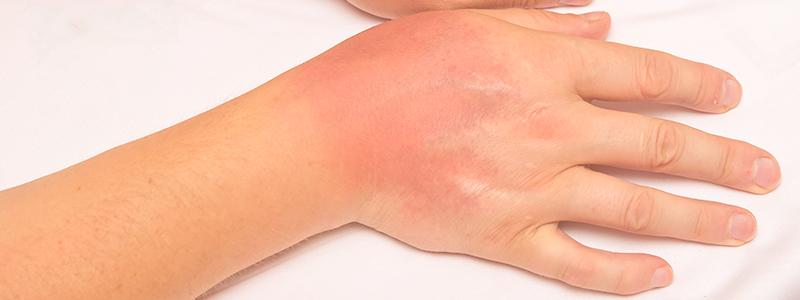Sometimes it’s obvious when a situation is an emergency. But oftentimes, it may not be. When every minute counts, you want to feel confident in your decision on whether or not to seek emergency medical care. But how do you know when you should go to the emergency room?
Emergency room visits took a sharp decline at the beginning of the COVID-19, following stay-at-home orders. In fact, the numbers are still 15-20% lower than they were in pre-pandemic times. However, emergencies continue to happen every day.
As infants under the age of one remain the number one visitor to ERs, we’ve previously covered when you should take your child to the emergency room. But for those who are not parents or caregivers to small children, how do you know when you should seek emergency care?
Whether you need quick life-saving intervention or relief from persistent pain, the freestanding emergency rooms at Neighbors Emergency Center provide 24-hour emergency care by board-certified physicians and feature state-of-the-art equipment for imaging needs. So, if you’re asking yourself, “Should I go to the emergency room?,” here are the top three reasons to go to the ER.
3 Reasons to go to the ER
The CDC has previously reported that more than 130 million people will visit an emergency room annually. But only about 27% of those visits are injury-related. While Neighbors is equipped to handle an extensive list of emergency situations, here are the top three (non-injury related) reasons you may need to visit an emergency room.
Abdominal Pain

Abdominal pain comprises 5 to 10% of all emergency room visits. With so many causes for stomach aches and abdominal pains, it can be hard to know when to be concerned, especially in children who are not always able to accurately describe what hurts.
When should you go to the emergency room for abdominal pain? Many stomach aches naturally resolve themselves, but here are some symptoms that indicate additional medical help is necessary:
- Pain so severe that it prevents normal sitting or walking
- Difficulty breathing
- Continued nausea, vomiting, or diarrhea
- Swelling in any part of the abdomen
- Severe tenderness in the abdomen
- Persistent high fever that cannot be controlled with a fever reducer
- Yellow tint to eyes or skin
- Vomiting of blood or blood in stool
- Accompanying chest, neck, or shoulder pain
Any of these symptoms require immediate emergency medical attention.
Other common incidents of abdominal pain that drive patients to the emergency room are from poisoning incidents. Food poisoning results from eating contaminated food and is one of the most common types of poisoning. Symptoms are usually apparent within hours of consumption and include diarrhea, nausea and/or vomiting. Most people who experience this type of poisoning feel better within 24 hours and do not need medical assistance; however, an emergency room visit may be in their future if the food poisoning is causing bloody stools or severe dehydration.
Accidental ingestion of household chemicals and appendicitis are also sources of abdominal pain, with symptoms that send sufferers to visit the emergency room.
FEVER

Prior to the COVID-19 pandemic, fever accounted for 7.9 million visits per year to the ER. But when should you go to the ER for a fever?
A fever is considered “high” when it reaches above 103 degrees Fahrenheit for adults, 102 degrees for children, or 100.4 degrees for infants. And while fevers are the immune system’s attempt to kill the infection, there are instances in which over-the-counter pain relievers simply won’t cut it.
While there is no specific temperature that immediately qualifies you for a visit to the ER, if your fever is coupled with additional symptoms like seizures, difficulty breathing, severe pain, stiff neck, trouble swallowing, confusion, dizziness, or headache, it may be a reason to visit the emergency room.
If you need help differentiating between whether you should be treated for fever at an urgent care center or a freestanding emergency room like Neighbors, read more on how to make that call in our blog, Urgent Care Versus ER: When Should You Go?.
CHEST PAIN

Chest pain can be caused by very serious conditions such as a heart attack or a blood clot in the lung, and it accounts for more than 8 million visits to the emergency room every year. It can also be caused by heartburn, esophageal problems, panic attacks, and other non-life threatening ailments, so how can you tell if your chest pain requires a visit to an emergency room?
Because your chest comprises both your heart and your lungs, there’s no easy way to determine the exact cause of pain without a visit to your healthcare provider. While only 5.5% of chest pain-related ER visits result in a severe diagnosis like heart attack, it’s important to recognize the heart-related symptoms of chest pain:
- Pressure or tightness in the chest
- A possible burning sensation or crushing pain that radiates to the neck, jaw, back, shoulders, one or both arms
- The pain is lasting, or intermittent and often intensifies during activities
- Shortness of breath
- Cold sweat
- Weakness
- Dizziness
Heart attack pain will not be relieved by changing positions, taking pain medication or antacids, breathing deeply, or exercising. If you feel you, or someone near you, is having a heart attack, you should call 911 or go to the ER immediately.
3 Reasons Not to Go to the ER
On the flip side, not every injury or illness is considered a medical emergency. While emergency rooms have benefits such as 24-hour access and advanced diagnostic machinery, certain ailments should be reserved for less immediate healthcare facilities. Here are three good reasons not to go to the ER:
TREATING COLDS

Colds are illnesses caused by a virus. There are many strains of the cold, which means it is possible to contract these viruses yearly or even multiple times a year. While there are no cures for colds, most are short in duration, lasting on average 7 – 10 days. Symptoms of colds can usually be treated with over-the-counter medicines and include:
- sore throat
- runny nose
- coughing
- sneezing
- headaches
- body aches
If you are still experiencing symptoms after 10 days, or they have increased in severity, it may be time to visit your PCP as the cold could be a bacterial infection and require antibiotics. While an ER could diagnose your cold, you’d be much happier (and heavier in the wallet) by seeking care from a non-emergent care provider.
Treating MINOR SKIN INJURIES

Minor skin injuries such as cuts or scrapes do not typically require a trip to the emergency room, and in fact, they can almost always be treated at home with a standard first-aid kit. Cuts and scrapes that are smaller than a half-inch in length, are not on the face, do not go below the skin (meaning no fat or muscle tissues is injured), and stop bleeding in less than 10 minutes (with pressure) are considered superficial wounds. Simply apply firm pressure to the area, clean it, and apply a fresh bandage. If the wound does not appear to be healing after a few days, it should be evaluated by a doctor.
Treating Minor Burns

While burns can definitely be a scary and painful experience, not all burns warrant a trip to the emergency room. Burn severity is rated on a scale of degrees, with 1st-degree burns being less severe and 4th-degree burns being the most severe.
READ MORE: How can I tell the severity of my burn?
First and some second-degree burns will heal fine with home first-aid treatment. See your doctor if the burn or blister doesn’t heal on its own in two weeks or the burn shows signs of infection (oozing, increase in pain, additional redness and swelling).
You may need to go to the ER for a burn if:
- The burned area is on a major joint area, covers a large area of the body, or covers hands, feet, the face, groin, or butt.
- The burn appears leathery or has charred patches (brown, black, or white areas).
- The cause of the burn was electrical or chemical.
- The person is having difficulty breathing, or there are burns in the airway.
Find the best ER near you
Emergencies can happen any time, anywhere. Neighbors Emergency Center is open 24/7/365 with short wait times and access to quality diagnostic and treatment services. We know we don’t see you on your best day, but we’re here to make it better, because you’re more than a patient. With six locations throughout Houston and in-network benefits, we’re more than just your local ER. We’re your Neighbors!

